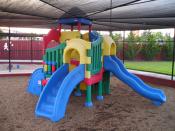SUMMARY Robert J. Mackenzie is the author of the paper and he is a therapist that specializes in children?s learning and behavior problems. First he describes Loren?s problem with his teachers and his parents. Loren keeps testing his parents and Mr. Mackenzie with his annoying spins of the chair. Mackenzie finds out that Loren?s parents don?t set certain consequences for him and that?s why he acts the way he does. Throughout the manuscript, Mackenzie introduces many major points to show the limits teachers have to set for children.
Why Consequences Are Important Mackenzie says, ?Consequences are like walls. They stop misbehavior. They provide clear and definitive answers to children?s research questions about what?s acceptable and who?s in charge, and they teach responsibility by holding children accountable for their choices and behavior. When used consistently, consequences define the path you want your students to stay on and teach them to tune in to your words.?
Mackenzie gives an example of this with Mr. Harvey and his class. Mr. Harvey uses the check-in procedure and the cut-off technique to assure his class will be run differently and it worked.
The check-in procedure is asking questions like: ?What did I ask you to do?? ?Did you understand what I said?? The cut-off procedure is giving bold statements like: ?We?re done talking about it. If you bring it up again, then?? ?Discussion time is over. You can do what you were asked, or you can spend some quiet time by yourself getting ready to do it. What would you like to do?? The first couple of weeks would be hard according to Mackenzie, the students would test you a lot but eventually they are going to listen if you stay consistent.
What Makes a ConsequenceEffective? Mackenzie states that ?The...


